There are some woody landscape plants that enjoy popularity but probably should be given careful consideration to before planting them in your yard. My criteria for a plant making this list isn't so much about insect and disease vulnerability, although that may be part of it, but more about how attractive and reliable the plant is, long term, in your landscape. This is my opinion based on years of observation. It's certainly a subjective opinion and if you've got any of these plants in your yard and you love them....my apologies! My list of five are (in no particular order):
5. Any Japanese holly. Scientific name - Ilex crenata. Helleri holly and Compacta holly are two that are commonly sold in nurseries (there are many!) that I have seen more dead or dying than doing well. Be sure, when buying a small leaf holly that doesn't have thorns, to look and see what the scientific name is. If it begins with Ilex crenata, you're probably going to regret your purchase. I suspect that Japanese holly is simply a plant that requires excellent soil conditions coupled with a consistent watering regiment (something, especially given the periodic outdoor watering bans, that isn't likely to occur in most landscapes over the long haul), but numerous other problems, such as web blight, anthracnose and canker problems have been linked to Ilex crenata, as well. An excellent common landscape plant to use as a substitute for Helleri, Compacta, and other Japanese hollies is Dwarf youpon holly (Ilex vomitoria 'nana'). Ilex crenata 'Compacta'
Ilex crenata 'Compacta'
(photo left) Bradford Pear Damage (photo, right)
Bradford Pear Damage (photo, right)
4. Bradford Pear. Makes the list based on two main factors. One, it is overused in the Southeast. Two, it is a very weak wooded tree and with age, becomes as brittle and breakable. I remember taking a woody plant course at Auburn, back in the 70's, and this tree was touted as having ornamental pluses for all four seasons of the year. The tree hadn't been used nearly as much in the landscape back then as it has been in the last two decades and some of the pitfalls of having a Bradford in your yard weren't as publicized back then. More recently, its use has declined quite a bit. In fact, in some new residential developments, it is banned from being planted. Nandina domestica 'Firepower' (photo, left)
Nandina domestica 'Firepower' (photo, left)
3. Dwarf Nandina 'Firepower'. I'm not including some of the neat prostrate hybrids out there, like Harbour Dwarf and Harbour Belle, of which I have planted many times. I'm talking about the old mop head dwarf Nandina. This is the original dwarf nandina or very similar to a plant I remember being sold as Nandina domestica 'nana'. It was a top seller at most nurseries during the 70's, 80's and in the 90's. This plant may be more deserving than to end up on my list, but I have seen enough plantings (especially those all too common linear plantings), to at the very least, brand them as being a little hard to swallow. The mop head shape of the plant and the curling under of the leaves with odd coloration that might resemble a chemical burn are unusual and I've noticed that, if conditions aren't just right, these plants can become quite scraggly, showing more wood than foliage. I'd say there are very few situations in the landscape where this plant would be considered perfect.
2. Leylend Cypress. Overused! Grows larger than anticipated for the space they are often times planted in. Many of these plants have been cut down from the corners of two story homes (because they outgrew the home) and replaced with more moderately growing landscape plants, like Mary Nell Holly, Ocala Anise, or some of the Hinoki cypress varieties that are available. Also, Leylend Cypress has a major blight problem that has resulted in lots of these plants displaying huge sections of dead foliage on them all throughout the South. Leyland was flying out of nurseries like mad just a few short years ago, but now it only takes a drive around town to see that something has got a hold of this once proud plant and it won't let go. Leyland Cypress showing canker disease (photo, right)
Leyland Cypress showing canker disease (photo, right) American Boxwood in decline (photo, left)
American Boxwood in decline (photo, left)
1. American Boxwood. An icon amongst plants! A mainstay of the old Southern gardens! This plant makes my list because it is rare you see American Boxwood being all they can be. It is, after all, high maintenance. From the leaf minors to the Phytopthera root rot to the required meticulous pruning, American Boxwoods are almost behind the eight ball before the get out of the nursery. Now, if you are willing to do what it takes (keep the bugs and harmful fungus and bacteria away) and are aware that you will spend a good bit of time hand pruning this small leaf plant to ensure it's health, then you could be rewarded with a truly outstanding plant, but I'll just say, I haven't seen many old outstanding American Boxwoods in the Central Alabama area.
"American Boxwood: Once a mainstay of old Southern gardens" (photo, right) 
Saturday, June 14, 2008
Five woody landscape plants to possibly avoid in your landscape
Posted by
themanfromearth
at
7:18 AM
![]()
Labels: landscape tip
Subscribe to:
Post Comments (Atom)

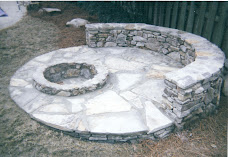






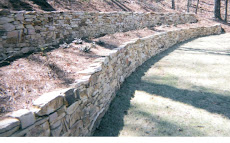





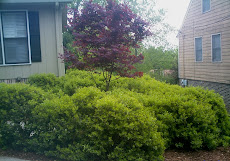
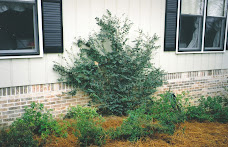
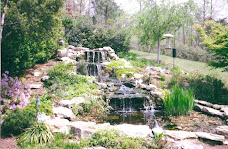
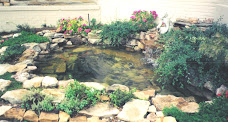




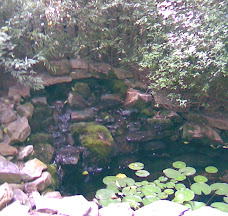





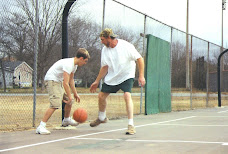
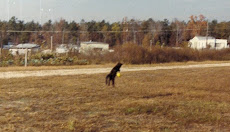
1 comment:
Post a Comment